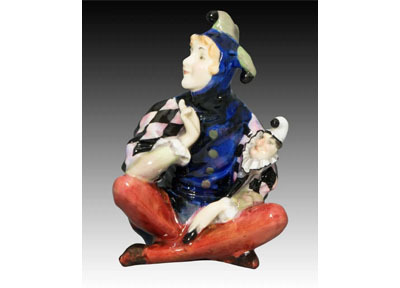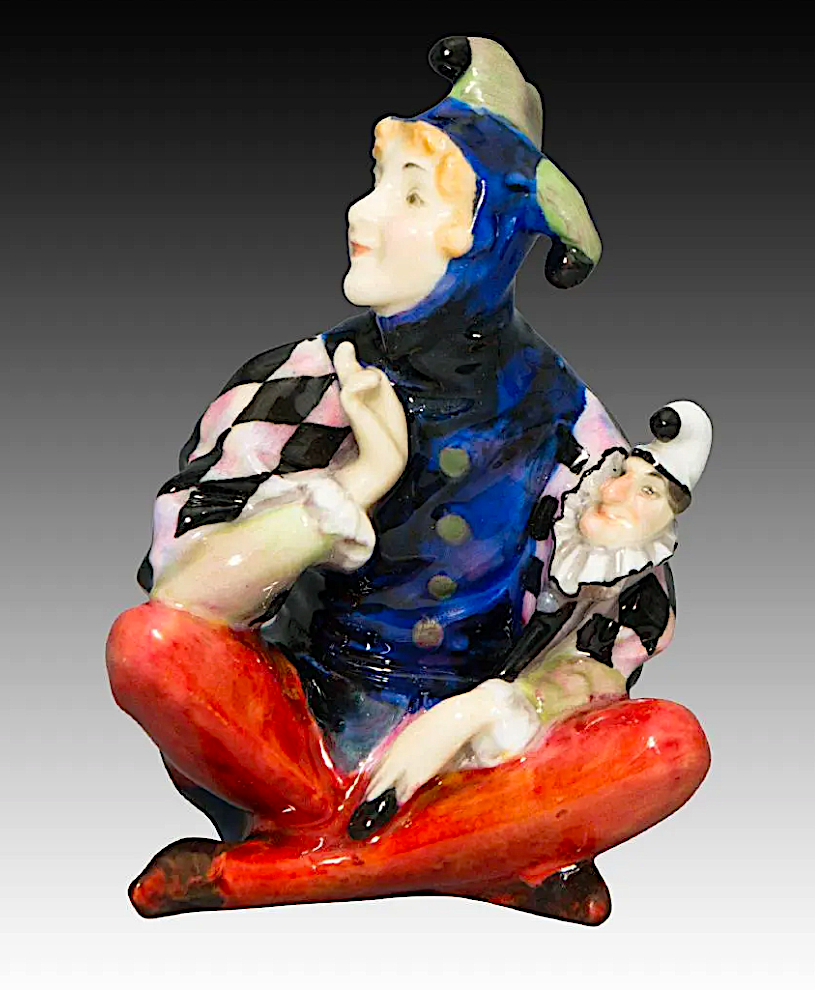
NEW YORK — The classical image of a medieval court jester is a lithe figure wearing a bi-colored hat known as a cap ‘n’ bells and a colorful top over form-fitting breeches. While the Oxford English Dictionary defines motley as a medley, the term is also the name of the jester’s traditional costume made from bright and mismatched patterns and colors. April Fool’s Day provides an excellent opportunity to explore a popular collecting niche: Royal Doulton jesters.
Founded in 1815, the English ceramics firm is well known for its toby jugs, dog figures and Hannah Barlow vases, to name a few. Countless collectors receive a lifetime of joy and excitement specializing in just one area of Royal Doulton production, with jesters being a prime example.
Jester imagery can be traced back to ancient Egypt and Rome but is most associated with the European courts of the Middle Ages. The jester also figured prominently in Shakespeare’s works, both as a symbol of laughter and also as a tragic figure, most notably in Hamlet’s “Alas, poor Yorick” monologue. Another forlorn jester appears in Gilbert and Sullivan’s opera The Yeoman of the Guard.
Reportedly, it was the latter that inspired Charles Noke, a renowned art director for Royal Doulton, to make his first figure for the company: a jester named Jack Point, styled after that opera’s heartbroken jester of the same name. A theater buff, Noke recreated jesters from several notable productions in the medium of ceramics.
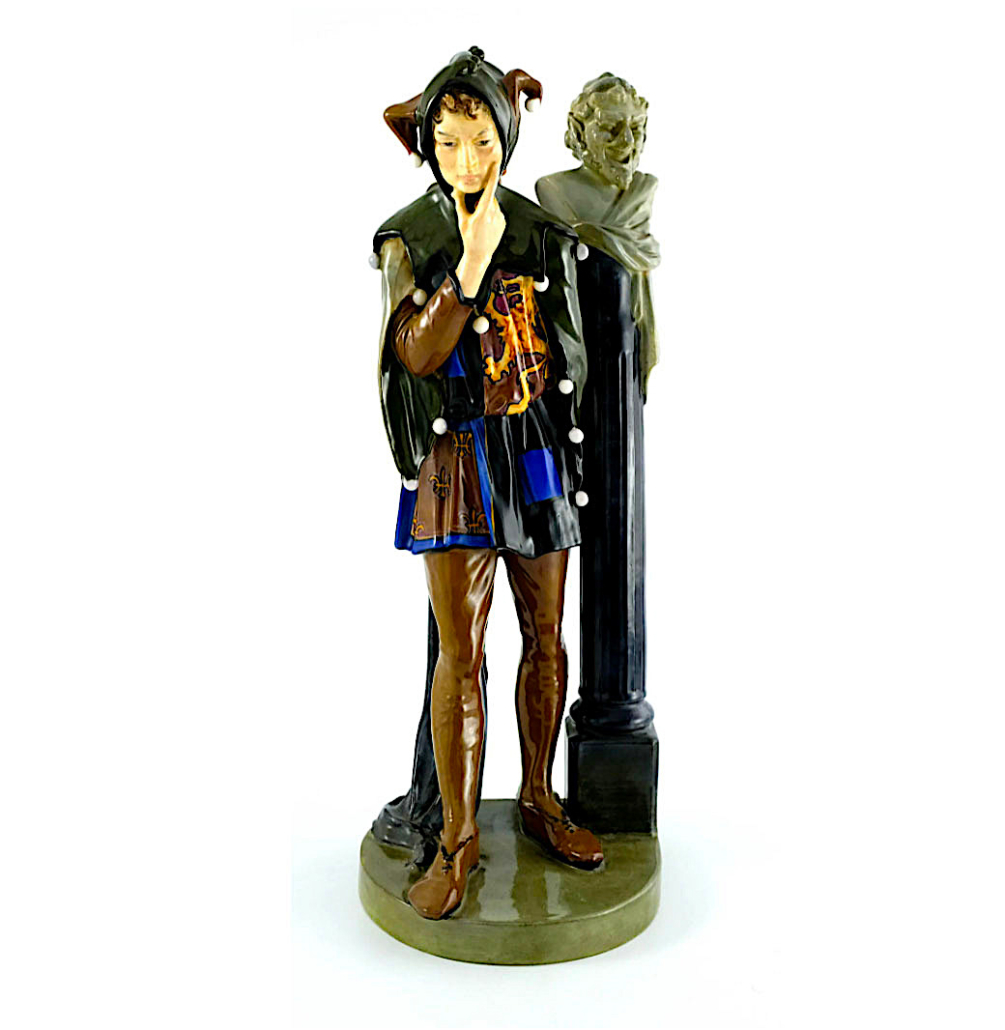
Royal Doulton specialist Christopher Evans, editor of the Doulton Collectors Club magazine, said Royal Doulton has a long history of producing jesters, many of which are credited to Noke. “At the Chicago Exhibition of 1893, the very first Doulton Vellum figures were exhibited and among them were A Jester, Lady Jester, Jack Point and a double-sided figure, Mirth and Melancholy,” he said, noting that Royal Doulton continued producing wares featuring jesters until relatively recently. A double jester figure designed in 1920 by Noke earned $9,168 plus the buyer’s premium in April 2021 at Kinghams Auctioneers. A rare version of the typical double figure, it is inscribed “Two heads are better than one,” and on one side, the main figure is depicted holding a Punch-headed marotte stick (not pictured).
Royal Doulton jesters were widely popular and came in many colors and variations: single or double figures, as well as standing, sitting or kneeling figures. Some are pictured leaning against columns and holding skulls, likely referencing Yorick, who Hamlet famously mourned. Other iterations are unimpeachably jolly. Its line of rabbit jesters, Bunnykins, includes a prototype that earned $9,250 plus the buyer’s premium in February 2021 at Lion and Unicorn. The 3¾in bunny jester has great colors and excellent modeling and holds a Punch or Judy jester figure.
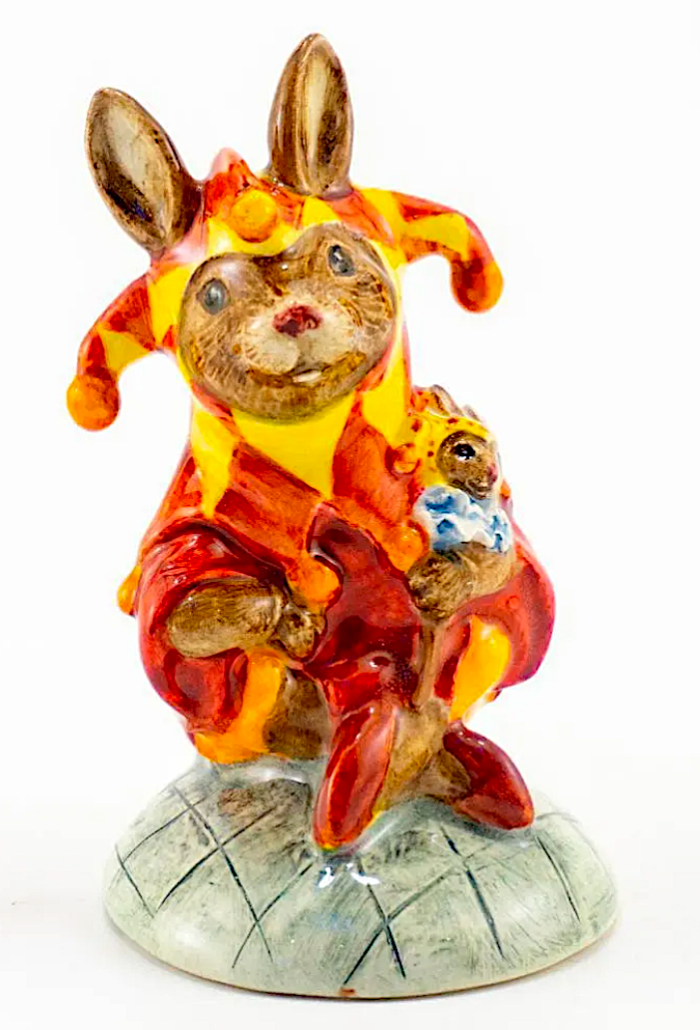
Noke’s early vellum figurines, especially jesters, were noted for muted colors as seen in the circa-1890 vellum jester pictured below. As a child, Noke often visited the Worcester Porcelain Factory, and this work was clearly influenced by that firm’s style. Vellum figures were made in limited runs and are scarce today.

Detail of an early vellum jester by C.J. Noke, dating to circa 1890. Image courtesy of the Doulton Collectors Club.
Because many Royal Doulton figurines were developed during artist Harry Nixon’s tenure, most jesters have a model number starting with HN in honor of his part in their production. A figurine of a lady jester sculpted by Leslie Harradine, a prolific artist for Royal Doulton, brought $2,600 plus the buyer’s premium in July 2018 at Lion and Unicorn, and is marked HN 1284.
Asked what makes one jester more desirable than another, Evans said it often comes down to rarity — “the earlier the better, or if it is a modern piece, [if it is] a one-off colorway or prototype that wasn’t put into production.”
Evans noted that Royal Doulton artists were very aware that the jester’s appearance was meant to provoke laughter and enjoyment. “Royal Doulton has produced a wonderful array of jester models and wares featuring jesters over the last 200 years. There are ardent collectors who simply seek out certain models to complete collections or else simply buy them because they appeal to them as individual pieces,” he said.
Auction house Lion and Unicorn in Hollywood, Florida has sold numerous standout examples. Lead auctioneer Brian Spillane said the jester imagery has expanded past the straightforward medieval cap-and-bells look into a branch of commedia dell’arte, with pierrots and pirouettes often considered jesters also. “Jesters are interesting. The look and the style and the concept of the jester was influenced by a lot of different kingdoms and art,” he said.
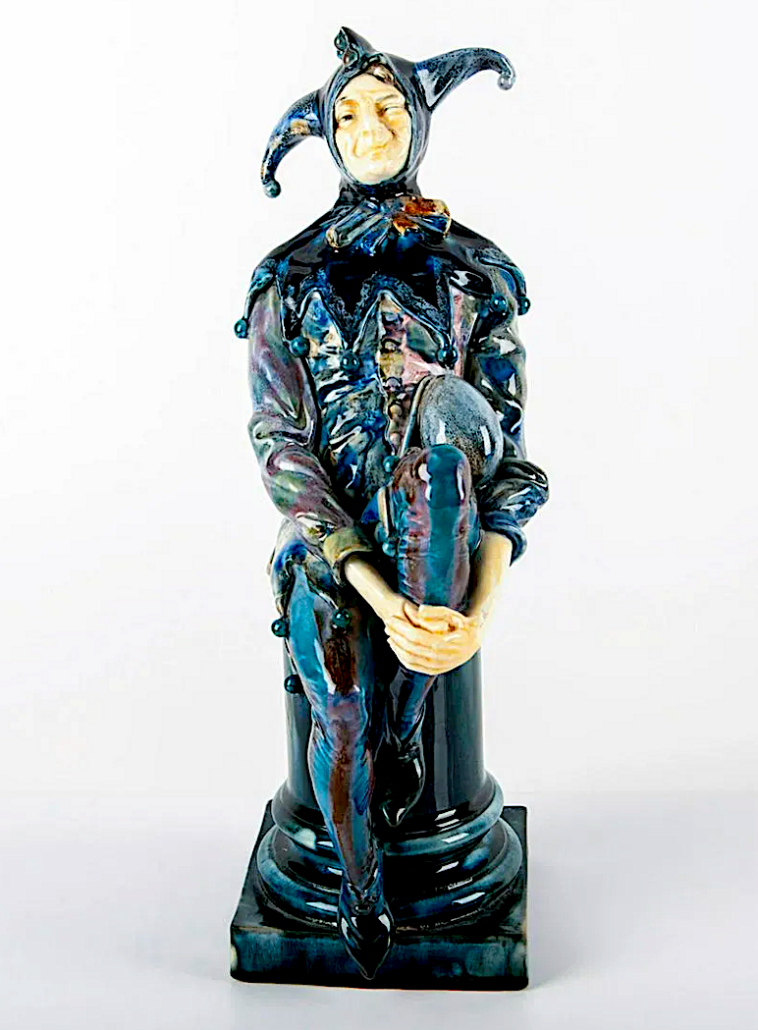
Louise Irvine, executive director of the Wiener Museum of Decorative Arts in Dania Beach, Florida, said people are drawn to Royal Doulton jesters for a wide range of reasons. “Just like the jester, the Royal Doulton figures make people happy,” she said. “Collectors enjoy the motley colors of the jester’s costumes and the many colorful varieties which were hand-painted by the Royal Doulton artists. There are many unrecorded colorways to find, which adds to the fun of the chase. Royal Doulton also produced several figures which did not get beyond the prototype stage and so are very rare.”
Prototypes were often rejected for production if artists deemed them too complex to mass-produce — for example, if they had complex coloration or outstretched fingers that could easily break off in the kilns. The factory would keep these prototypes in their own private museum-like archives, and some pieces languished there for decades before finding their way into the hands of private collectors. A good example of this phenomenon is a 16in tall jester, made by Noke in the 1920s, that attained $30,000 plus the buyer’s premium in December 2021 at Lion and Unicorn.
After a high point in the 1970 and 1980s, the market for Royal Doulton slowed, but things appear to be changing. Spillane says the market is not only on the rise, but that younger people are increasingly aware of and enchanted by these wares. “Younger buyers who didn’t even know that there was this world out there, but who are internet savvy, are now being given the opportunity to be involved in these auctions and this kind of material,” he said. “They are realizing the wealth and the rarity of the pieces.”


